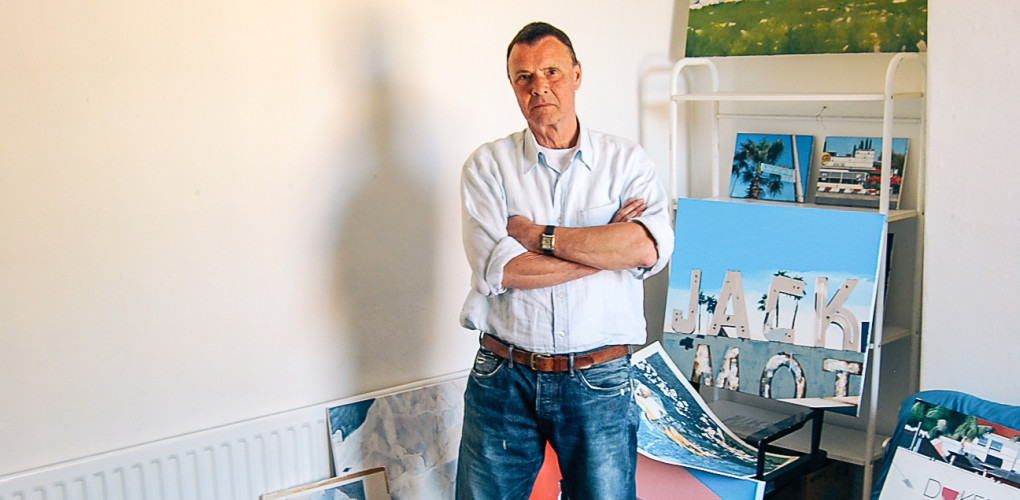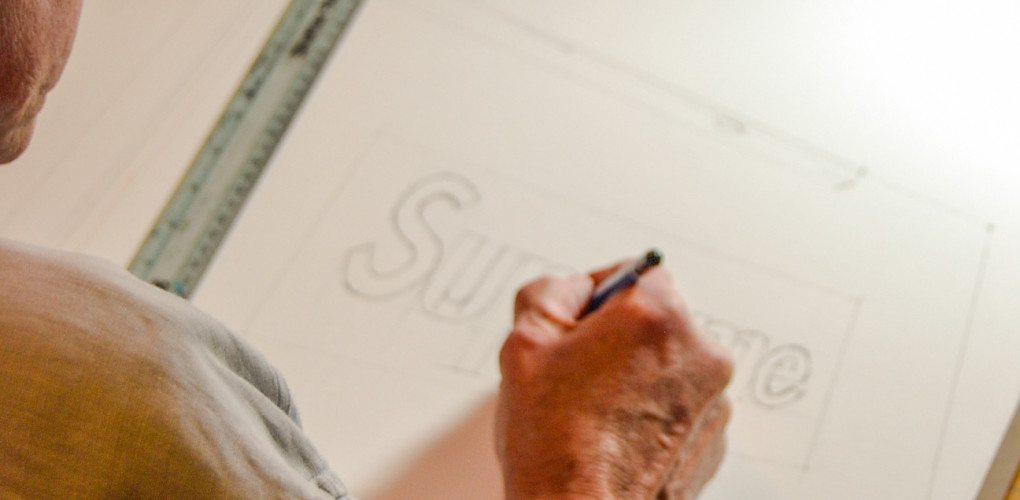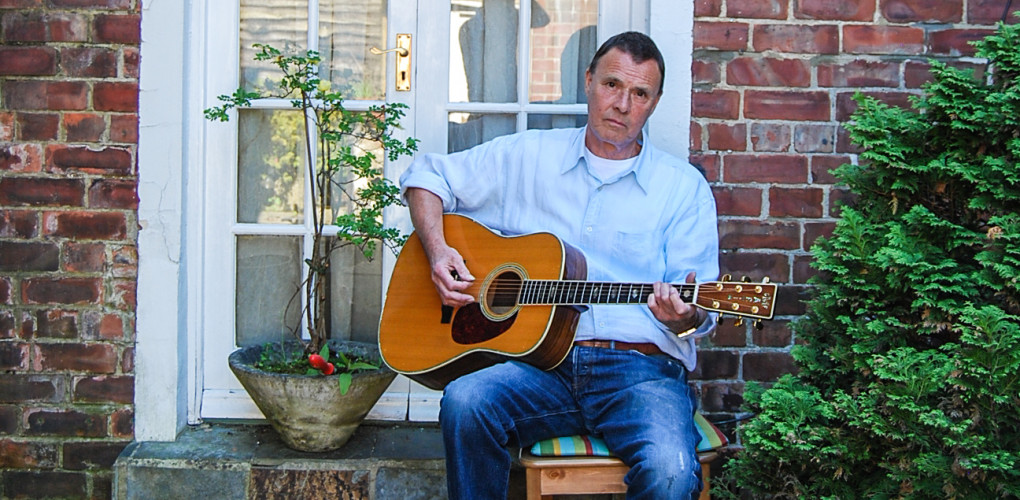Inside the Studio
 John Tierney
John Tierney
Favorite material to work with?
I paint in oils, on canvas. Most of my work takes the urban landscape of Los Angeles (and to some extent that of New York, Helsinki and Las Vegas) and the desert landscape of Joshua Tree national Park in California as its subject matter.
I work from photographs. None are from the public domain; rather, they are taken by family, friends or myself. My paintings are highly detailed and aim to capture fleeting moments, and communicate a strong sense of place – what it felt like to be there at that time. I suppose that a further dimension to this is that I visit these various locations as, in a sense, an ‘outsider’ (being an Englishman) who is fascinated by the differences between them and, say, the urban landscape of an English City. For example, as a painter I am attracted to Los Angeles because of the juxtaposition of light and architecture. The light has an intense luminosity, creating strong shadows and sharp outlines between buildings and sky. The architecture is, to put it mildly, seductively eclectic, taking in old and new iconic buildings and a whole range of small-scale quirky establishments – as one finds along Melrose Avenue, for instance. One (large) store I been drawn back to on a number of occasions is the Paul Smith store on Melrose (Paul Smith used one of these paintings as the image on a limited edition silk scarf). It is not my intention to slavishly reproduce a photographic image, rather, the photographs represent the raw material, a resource to be worked on and interpreted, in the process creating a new representation drawing on technique, use of colour and composition. It’s a bit of a cliché, but there is a difference between ‘looking’ and ‘seeing.’
What themes do you pursue?
The American artist Edward Hopper spoke of grasping the ‘surprises and accidents of nature.’ My position is congruent with his, though I am also interested in grasping the surprises and accidents of photographs: light and shade, movement, placement of people, etc. Photographs provide a sort of serendipity: unexpected, accidental details within the photographic image.
How many years as an artist?
Although I have been interested in art and painting since I was a teenager at school in the 1960s, only recently have I considered myself to be an ‘artist’. Until I retired three years ago, the amount of time I was able to devote to painting (along with other activities) was severely constrained by the demands of full time employment. This, of course, describes the classic so called ‘Sunday painter’, though a lack of time often prevented getting the paints out even on Sundays.
From age eleven I attended what was known in England as a Secondary Modern school. Such establishments were basically designed for children who were considered to lack academic ability. Thus pupils were, in effect, being prepared for various manual occupations. I was fortunate in being given the rare opportunity in such schools to stay on for an extra year in order to take what were then called ‘O’ level examinations. As a result, I left school at sixteen with a few ‘O’ levels under my belt and became an apprentice engineering draughtsman.
In my early twenties I decided to apply for a place at university to study for a degree in sociology. While I lacked the standard qualifications for entry, I was accepted on the strength of my engineering qualifications (and probably my enthusiasm at the interview). After graduating I spent a number of years teaching in further education, then, after acquiring post-graduate qualifications, I eventually returned to the university sector as a lecturer in Criminology. Retirement from the world of academia provided the opportunity to pursue my interest in art on a full time basis. However, throughout the earlier, and lengthy, period I continued to paint and draw, experiment with various media, read books on art and anguish over the issue of ‘style’. Only now, though, would I consider myself to be, in the loosest sense, an artist. My studio is in my house in the north east of England.
What was the best advice given to you as an artist?
Who can say whether or not the following was the best or the worst advice given to me? What I can say is that I have no regrets whatsoever in taking a career path that led me to become an academic criminologist. During my final year at the school referred to above, I attended a parent-teacher evening with my mother. The head teacher approached us and asked me what I wanted to do when I left school. I said I was interested in going to art school. The head teacher was clearly appalled, as if I’d said I wanted to be a film star. He looked pleadingly at my mother, while mumbling about a lack of security and pies in the sky. In defense I mentioned a schoolmate who was going to art school (also called John and still a friend of mine). The head teacher’s response was: ‘But he’s a better artist than you are’. I expect that a few months later he was pleased to learn that I had become an apprentice in engineering, rather than in art. In truth, I wasn’t as good as John, who went on to become an art teacher. He did, however, have a bumpy ride at art school, where the staff saw it as their mission to divert him from developing his representational and highly realist approach to painting in favour of a looser, more impressionistic approach.
Prefer to work with music or in silence?
I always work with music in the background. This covers a broad range, taking in country, rock and classical. An indication of the sort of music I listen to will be found under my name on a website devoted to artists and their music: http://www.studiomusic.fm/index.html
Favorite artist?
I particularly admire – and have been influenced by – the work of David Hockney (especially his paintings of LA in the 1960s) and Peter Blake. More recently, I have been impressed by the lithographs produced by the LA-based artist Ryan Graeff. In fact, one of his images (known as ‘Bandit’) was used as the cover for one of my criminology books. In the context of favourite artists, I should also mention (again) Edward Hopper, whose paintings of the American urban landscape have had an especial influence on my own work. If I could have any one piece of art (in the sense that it would hang on a wall in my house), I would choose Hopper’s ‘Nighthawks’.
Interests other than art?
I sing and play the guitar, and occasionally write songs. My ‘Silence and the Stars’ EP can be heard at my personal site.
Just a few years ago I was asked to play live at The Hotel Café in Hollywood, CA with other musicians such as Tom Morello, Perry Farrell, and Ben Harper. That was an evening I will never forget. Incredible.
I also travel quite a bit. As the earlier discussion of the themes of my paintings suggests, my three main ports of call are Los Angeles, New York and Helsinki.
Favorite Brush?
The Pro Art, Prolene Series round 101000. As all those zeros indicate, this is a tiny brush that allows me to carry out the detailed work in a painting, as well ensure sharp straight lines between, for example, buildings and sky.
Is painting dead?
This was one of the questions asked as part of this question and answer piece. The short answer is no. The long answer will have to be put to one side for another time.











